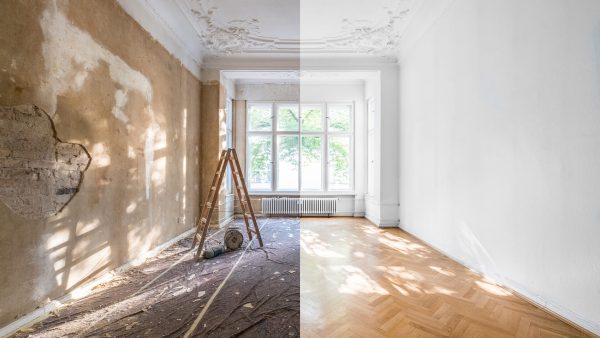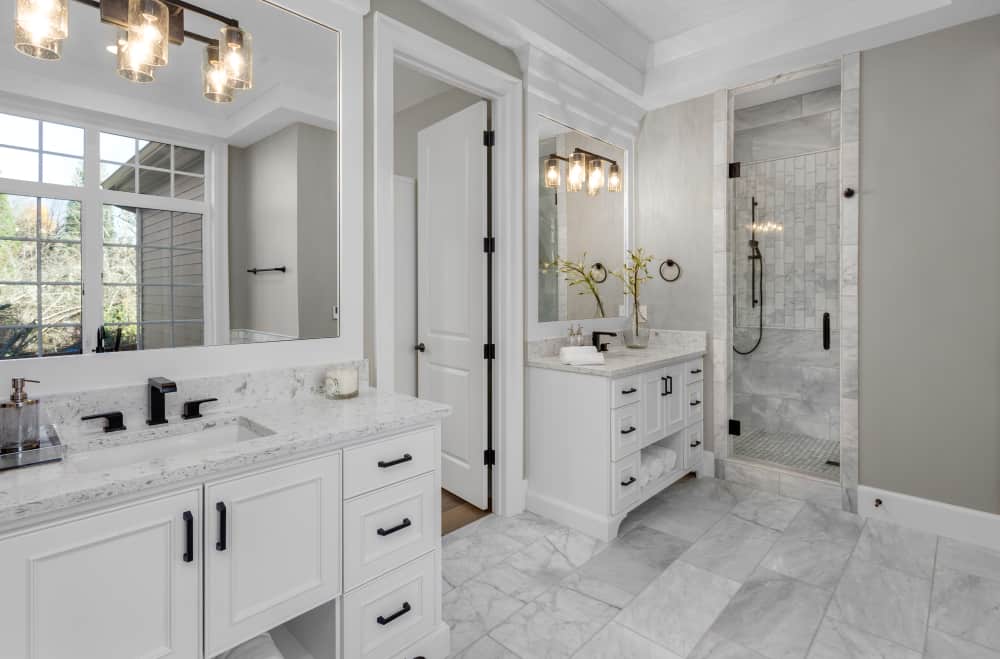Every homeowner thinks about remodeling their house at some point. Whether they’re sprucing up an old home or renovating a fixer-upper, you want to make your home feel as comfortable as possible.
But first, you need to have a plan.
When renovating a home, you might have a vision of what you want the house to look like when all is said and done. But in order to reach your goal, you need to follow a series of steps and procedures to ensure no mistakes are made.
Unfortunately, many homeowners are less focused on the means and more on the end. This ultimately ends up in project errors and dissatisfaction.
So, what are the common pitfalls an amateur homeowner might run into while renovating?
Page Contents:
1. Going Over Budget
Remodeling even a small part of your home can cost you thousands of dollars. Renovating the entire house will set you back even more.
In 2021, the average cost to completely renovate a 3-bedroom home ranged between $20,000 to $100,000.
Setting a reasonable budget is one of the most important parts of home renovation. If you aren’t careful, you could easily go over budget and put your bank account in the red.
To compensate, you should consider adding an additional 20% to your existing renovation budget. Having this “safety net” in place can help you prepare for any unexpected costs that might arise during remodeling.
2. Spending Too Little
Conversely, there is such a thing as being too cheap while renovating your home. In an attempt to stay within the budget, you may be tempted to purchase materials that are inexpensive.
But in these cases, you really do get what you pay for…
Cheaper materials often lack the durability of more expensive items.
Higher-quality materials can last for years, possibly even decades, before needing to be replaced. They may be expensive in the short term, but in the long term, they are a worthwhile investment.
3. Prioritizing Form Over Function
When renovating your home, you should always focus on the structural integrity of the building itself. This means checking the following things to ensure they are working properly:
- Electrical system
- Heating & ventilation
- Plumbing
However, most home renovations are done to improve the outward appearance of the house. Failing to renovate the structure of the home could potentially lead to severe damage, costing you thousands of dollars in repairs.
4. Focusing on the Wrong Things
Home renovation is a great opportunity to improve the quality of your house. But it’s important to focus on the long-term, not the short-term.
For example, you may be interested in buying new appliances for your kitchen…
But a new fridge or oven shouldn’t take priority over the flooring or walls.
Remember: the structural integrity of a home should always come first. Any cosmetic changes should be made only after all other renovations are complete.
5. Ignoring Preparation Techniques
Before you do any actual renovation, it’s crucial that you do the proper prep work first.
If you’re repainting the walls, prime them ahead of time. If the floor is being redone, do some structural work first.
Failure to do any preparatory work will result in an unappealing final design at best…
And structural damage at worst.
Consult with an architect or design specialist for more information regarding prep work. Alternatively, hire a contractor to do the necessary preparation for you.
6. Trusting Yourself Over Professionals
When it comes to renovating a home, most homeowners are confident that they know what they’re doing.
They’re the ones with the vision, after all, which means they know what they want to do…
Though in some cases, homeowners really don’t.
That’s why it’s important to consult with architects and designers. They will be able to tell you what to prioritize during the renovation, what to put on hold, and how to get the best results.
You could also hire a General Contractor for additional support.
It may eat into your budget, but a good contractor will do their best to meet your standards while using proper equipment and materials.
A little humility goes a long way!
7. Buying Furniture/Appliances Too Early
If you are completely redoing a specific room in your house, then you might already have an idea of what furniture you want to buy.
But it’s recommended that buying furniture should be the last part of any renovation.
Wait for the structure of the room to be completed first. Once the room itself is renovated, you will have updated measurements that you can reference when ordering furniture.
You can also pick furniture that compliments the color of the room if you repainted it.
Ordering furniture or appliances before a room is completed runs the risk of the furniture taking up more space than intended, or clashing with the overall color scheme.
8. Being Indecisive
On top of having a reasonable budget, any home renovation also requires a plan of action. Once you make a decision, you should be able to commit to it.
But what happens if you change your mind halfway through?
Not only will you have wasted your time, but you’ll also risk going over budget and wasting even more money on new materials.
If you do change your mind at any point in the renovation, it’s best to do so before you make any major progress.
9. Not Complementing the Neighborhood Design
While you might not be thinking of other houses when renovating your own, maintaining a consistent design with the rest of the neighborhood is an important step.
This is especially true if you are renovating the outside of your home…
A design choice that appeals to you, for instance, could come off as garish when compared to other houses nearby. This could potentially lower the resale value of your home should you decide to sell it.
Look at nearby houses for inspiration, and consider asking your neighbors if they could offer any design tips. Keeping a consistent “theme” with the rest of the neighborhood is sure to make your home look attractive!















